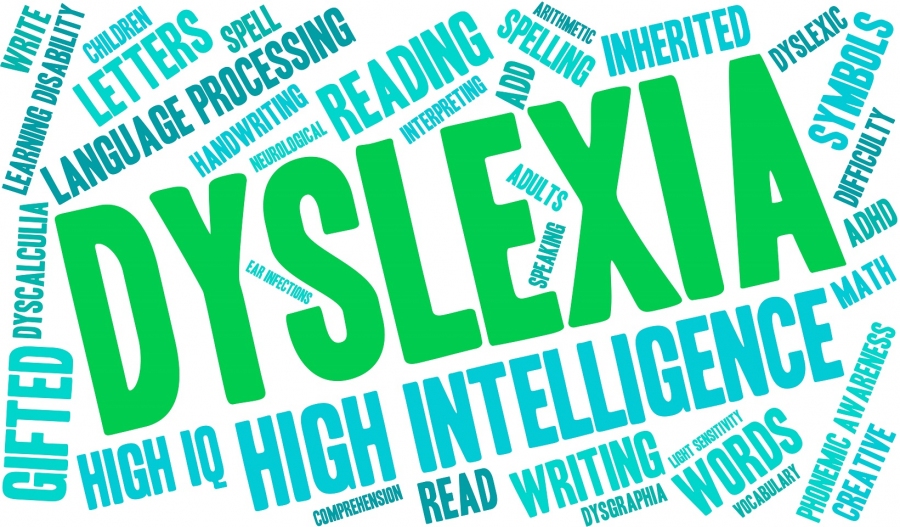As a mother whose child has a dyslexic classmate, I’m intimately familiar with the challenges that can be faced by both friends and family. Dyslexia is a word that most will be familiar with, but the true nature of the condition is not very well understood. The result is that those suffering from dyslexia will often experience a wide range of both academic and social issues while in school, which then carry on to their adult lives.
But it doesn’t need to be this way at all – there are some very real steps that both parents and children can take to help dyslexic children fulfil their potential and fit in with the rest of the class. Small changes in attitude and behaviour can make a significant difference.
How to Spot Dyslexia
As a parent, it’s important to be able to recognise dyslexia in children, whether your own or not. We’ve all come across children who have a little difficulty compared to other students when it comes to writing, spelling, and reading. But how can you tell whether the child in question is suffering from dyslexia?
While each case is different, there are several clear signs that should lead to a suspicion of dyslexia:
- Difficulty following clear instructions
- Slow in writing and reading
- Excellent oral ability but poor writing skills
- Confused with similar letters
- Adds or omits words when reading
- Confused by mathematical symbols such as ‘x’ and ‘+’
- Concepts such as today and tomorrow are difficult to understand
- Class clown or particularly withdrawn
- Child seems to be a bit of a ‘dreamer’
These signs don’t always come together all at once, nor is this a complete list. However, should a single or combination of signs crop up, dyslexia should not be discounted and an expert should be consulted.
Your Child’s Reaction – Helping Them Understand
Children with dyslexia are not often easy to spot for adults, never mind children. That’s why kids with dyslexia are often mistreated or misunderstood by other children. If your child has a friend or classmate with dyslexia, you should play a key role in helping them understand what the condition is and how it affects those that have it.
The first steps in successfully helping your children understand is having a firm grasp of the concept yourself! Be sure to talk to teachers about dyslexia, how it’s manifesting in those in class, and how your child is dealing with the situation. Also be keenly aware of what dyslexia is and how if affects people. Only then can you truly help your children understand.
Once the foundations have been set, help your child hold on active role in integrating those with dyslexia. The following strategies can be of great advantage, both to those with dyslexia as your own child.
Be a Good Listener
Encourage your child to be a good listener, to be a good companion to a classmate with dyslexia. Encourage a positive line of communication between your child and his or her friend, entrenching the idea that dyslexia will often make it difficult for people to communicate as smoothly as others do.
That’s why you need to constantly and kindly remind your child that dyslexia is a problem that may be subtle, but nevertheless very much present. Instead of poking fun or ignoring those with dyslexia, they should be treated fairly, with respect, and as peers.
Don’t Make Fun
Children are often cruel creatures and poking fun at someone who is slightly ‘different’ is something you may come up against. By helping your child understand that dyslexia is at the cause of academic or social struggles, words such as ‘lazy’ or ‘stupid’ won’t be thrown around as easily.
Remember, bullying can create some very deep scars and will lead issues related to dyslexia to be exacerbated even further. Feelings of despair and lack of ability will only become stronger, leading to a regression in both academic and social progress.
Help Each Other!
Parents often think that dyslexia affects all ways of learning, but they are sorely mistaken. My child’s classmate (who is also his friend) is particularly strong in maths, whereas my poor boy has never had the greatest aptitude for numbers.
This created the happy circumstance where the two were able to help each other out, each tutoring the other in their weaknesses. Both children were flabbergasted that they had it in them to make such a difference in another, giving great satisfaction. Academic results improved for both – but I think that the social effects were perhaps more strongly felt!
The School’s Role
It’s also important that the school plays a prominent role in ensuring the circumstances exists where dyslexic children can excel and feel comfortable. The setting must be such where children feel supported by both teachers and classmates.
Our school (or rather, the school my child attends!) has a particularly commendable role in helping children with dyslexia to perform to the best of their abilities. Not only that, the aspect of social integration has been at the forefront as well, leading to a positive development of the child as a whole.
Helping Children Understand
As a parent, you need to take responsibility for helping children understand dyslexia on an individual level. However, teachers should also create a setting where dyslexia is accepted and nurtured as a group, which is slightly different.
Our school has made a great effort to ensure that everyone is aware what dyslexia is, but also what it isn’t. Children that are at a slight disadvantage are not treated with fear or as inferior, but rather as classmates that need a little understanding on certain things. This has helped dyslexic children creep out of their shells, not be embarrassed by their struggles, and fully integrate with others.
Looking at the Full Picture
In my opinion, the key to the success of the school’s strategy is not placing academic performance as the only priority. Children with dyslexia already place an undue amount of pressure on themselves – having exterior influences all clamouring for academic improvements would only serve to discourage the child further.
Instead, the focus is on progression and improvement. Realistic goals are set and worked on continuously and with the right encouragement across all channels of the school. If someone has a problem, it’s dealt with quickly and with a positive outlook. The so-called ‘cycle of failure’ is avoided by celebrating goals that are attainable and cranking up expectations slowly and according to the needs of each individual child.
Ultimately, parents, schools, and the children themselves all have a strong role to play. It’s important that as a parent you perform your role to the best of your abilities, encouraging your child to help dyslexic classmates. Coupled with a strong strategy from the school, it’s the key to dyslexic children meeting their potential and being happy in their classes.
















